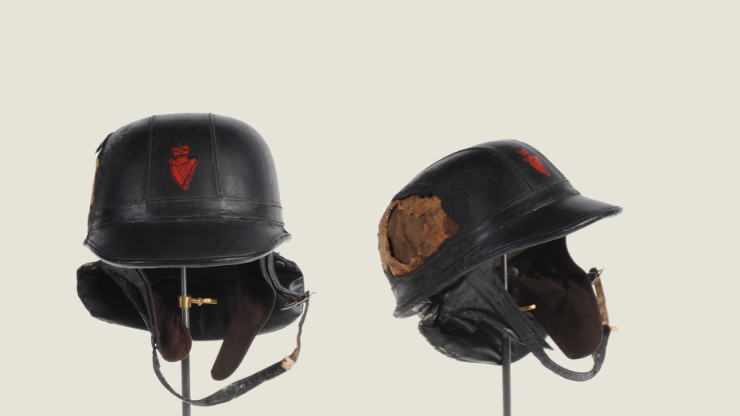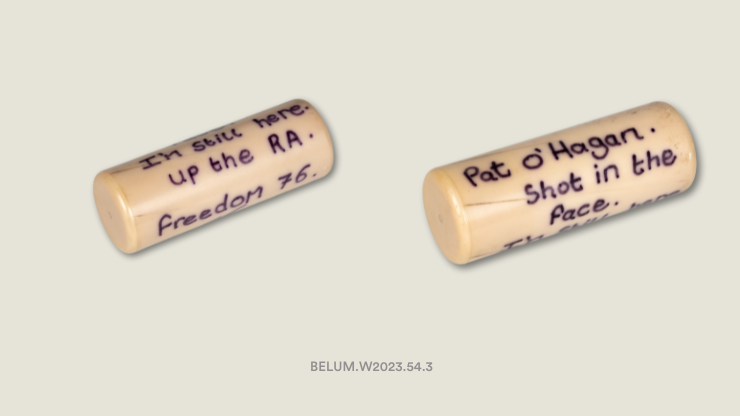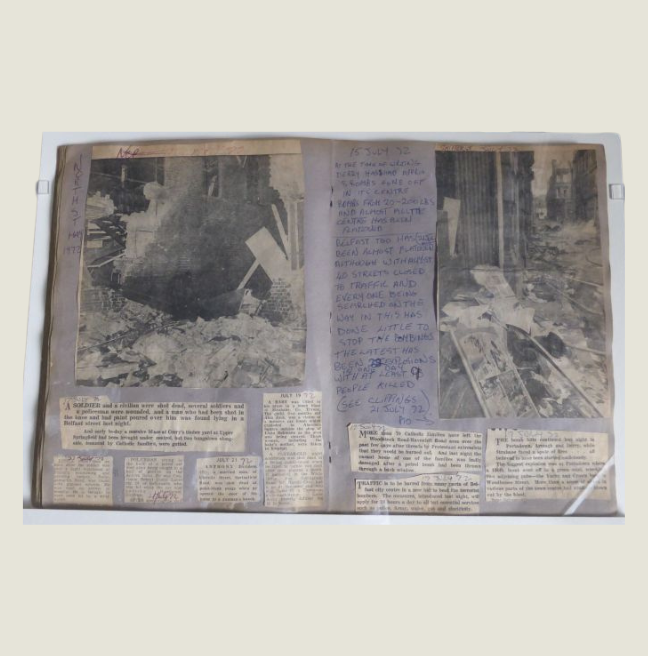1970s
Political violence intensified and became more deeply rooted with the rise of republican and loyalist paramilitary groups in Northern Ireland. This decade witnessed some of the most horrific atrocities of the Northern Ireland conflict.
The period from 1972 to 1976 was marked by intense violence. During this time, security measures dramatically increased, significantly impacting everyday life. Here are some objects that help tell this story.
Nearly 500 people were killed in a single year in 1972. Some of the most serious atrocities occurred between 1970 and 1980, including Bloody Sunday and Bloody Friday.
Security Forces & Paramilitarism
Following the escalation of violence, the Hunt Committee report outlined proposals for the reform of the police service. This resulted in the disbanding of the auxiliary police force the Ulster Special Constabulary (USC) in 1970 and the formation of the Ulster Defence Regiment (UDR).
In all, more than 300,000 British soldiers served in Northern Ireland, 503 were killed and more than 3,000 injured. Locally recruited members of the security forces suffered 509 casualties. During the course of the Troubles, 200 full-time members and 103 members of the RUC Reserve were killed and more than 9,000 were injured. Between 1970 and 1992, 199 UDR members and 47 former members were killed, many while they were off duty. On 1 July 1992, the UDR was merged with the Royal Irish Rangers to form the Royal Irish Regiment, a regular unit of the British Army. Seven of its members were killed between 1991 and 1994. Overall, the security forces were responsible for 367 deaths. The British Army was responsible for 302 deaths, the RUC was responsible for 51 deaths and the UDR was responsible for 8 deaths. Of all those who died during the Troubles, 2087 were civilians.
The rest of the world was heavily influenced by Cold War politics, with local issues often framed in the language of that era.
Politics
Whilst the conflict dominated the headlines, it both compounded and was fuelled by Northern Ireland’s severe social and economic problems. The decline of traditional industries increased unemployment, and extensive housing redevelopment created urban wastelands.









































